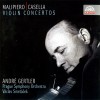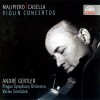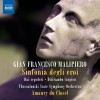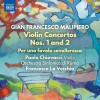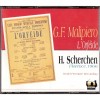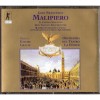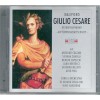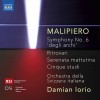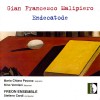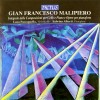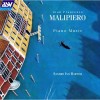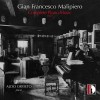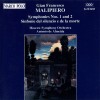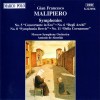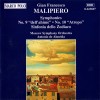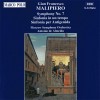| Country: | Italy |
| Period: | Impressionism, Neoclassicism |
Biography
Gian Francesco Malipiero (Italian pronunciation: [ˌdʒam franˈtʃesko maliˈpjɛːro]; 18 March 1882 - 1 August 1973) was an Italian composer, musicologist, music teacher and editor.
Born in Venice into an aristocratic family, the grandson of the opera composer Francesco Malipiero, Gian Francesco Malipiero was prevented by family troubles from pursuing his musical education in a consistent manner. His father separated from his mother in 1893 and took Gian Francesco to Trieste, Berlin and eventually to Vienna. The young Malipiero and his father broke up their relationship bitterly, and in 1899 Malipiero returned to his mother's home in Venice, where he entered the Liceo Musicale.[1]
After stopping counterpoint lessons with the composer, organist and pedagogue Marco Enrico Bossi, Malipiero continued studying on his own by copying out music by such composers as Claudio Monteverdi and Girolamo Frescobaldi from the Biblioteca Marciana, in Venice, thereby beginning a lifelong commitment to Italian music of that period.[1] In 1904 he went to Bologna and sought out Bossi to continue his studies, at the Bologna Liceo Musicale ("Music High School"). After graduating, Malipiero became an assistant to the blind composer Antonio Smareglia
In 1905 Malipiero returned to Venice, but from 1906 and 1909 was often in Berlin,[3] following Max Bruch classes.[4] Later, in 1913, Malipiero moved to Paris, where he became acquainted with compositions by Ravel, Debussy, De Falla, Schoenberg, and Berg. Most importantly, he attended the première of Stravinsky's Le Sacre du Printemps, soon after meeting Alfredo Casella and Gabriele d'Annunzio.[2][3] He described the experience as an awakening "from a long and dangerous lethargy".[1][2] After that, he repudiated almost all the compositions he had written up to that time, with the exception of Impressioni dal vero (1910–11)[1] At that time he won four composition prizes at the Accademia Nazionale di Santa Cecilia in Rome, by entering five compositions under five different pseudonyms[citation needed].
In 1917, due to the Italian defeat at Caporetto, he was forced to flee from Venice and settled in Rome.
In 1923, he joined with Alfredo Casella and Gabriele D'Annunzio in creating the Corporazione delle Nuove Musiche. Malipiero was on good terms with Benito Mussolini until he set Pirandello's libretto La favola del figlio cambiato, earning the condemnation of the fascists. Malipiero dedicated his next opera, Giulio Cesare, to Mussolini, but this did not help him.
He was a professor of composition at the Parma Conservatory from 1921 to 1924. In 1932 he became professor of composition at the then Venice Liceo Musicale, which he directed from 1939 to 1952. Among others, he taught Luigi Nono and his own nephew Riccardo Malipiero.
After permanently settling in the little town of Asolo in 1923,[5] Malipiero began the editorial work for which he would become best known, a complete edition of all of Claudio Monteverdi's oeuvre, from 1926 to 1942, and after 1952, editing much of Vivaldi's concerti at the Istituto Italiano Antonio Vivaldi.







